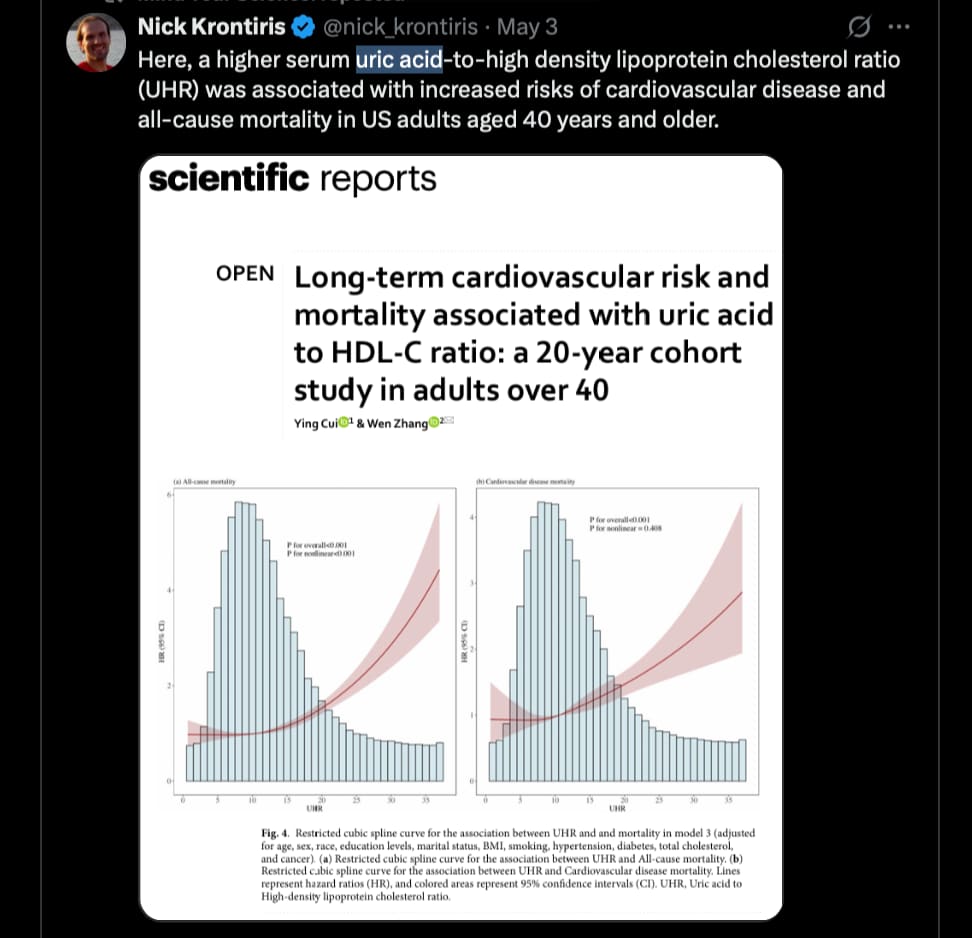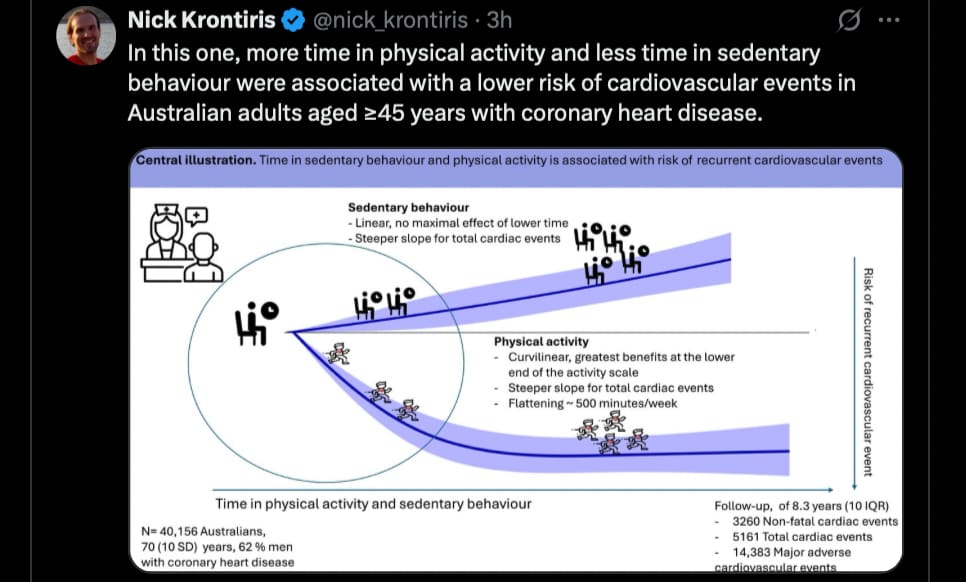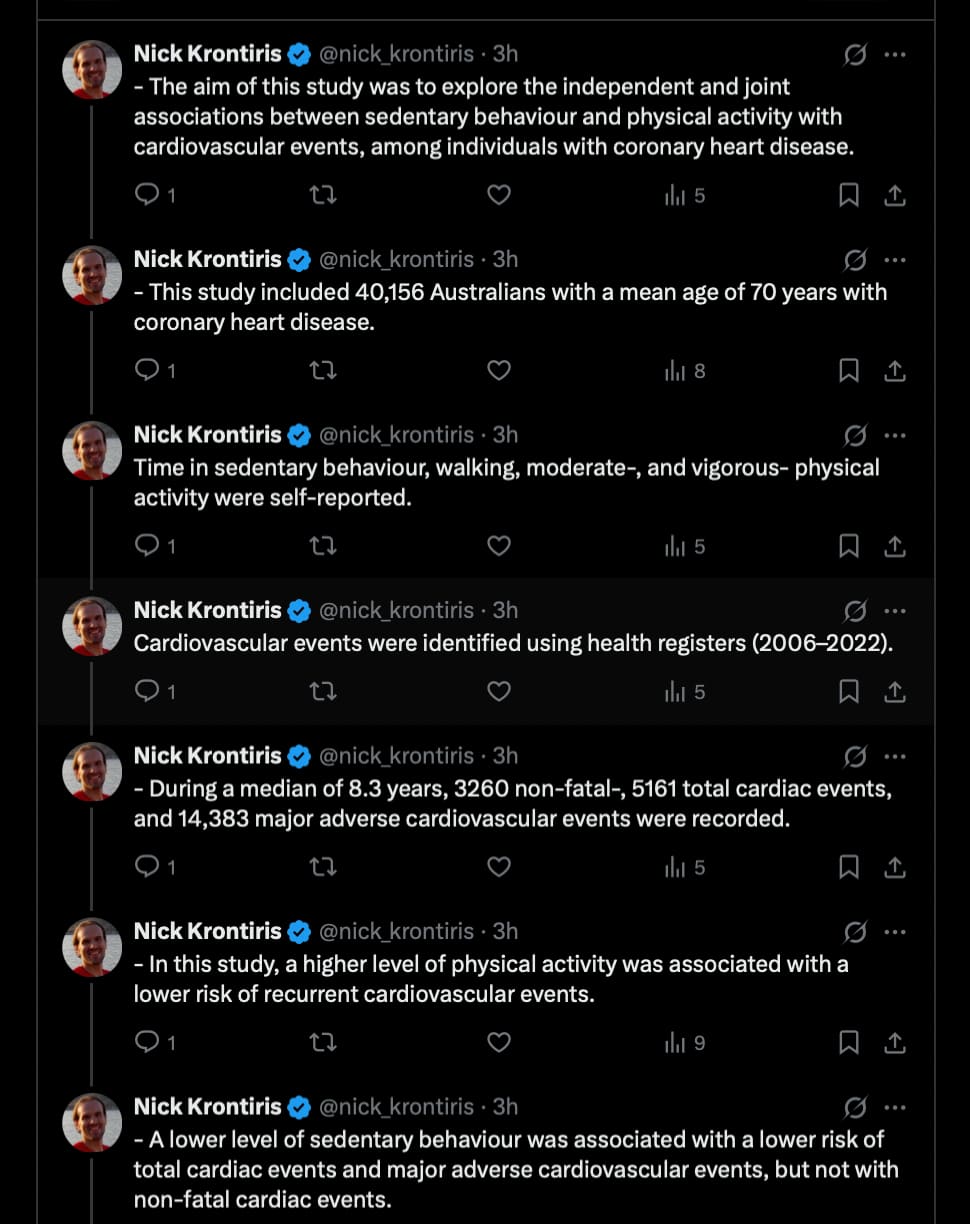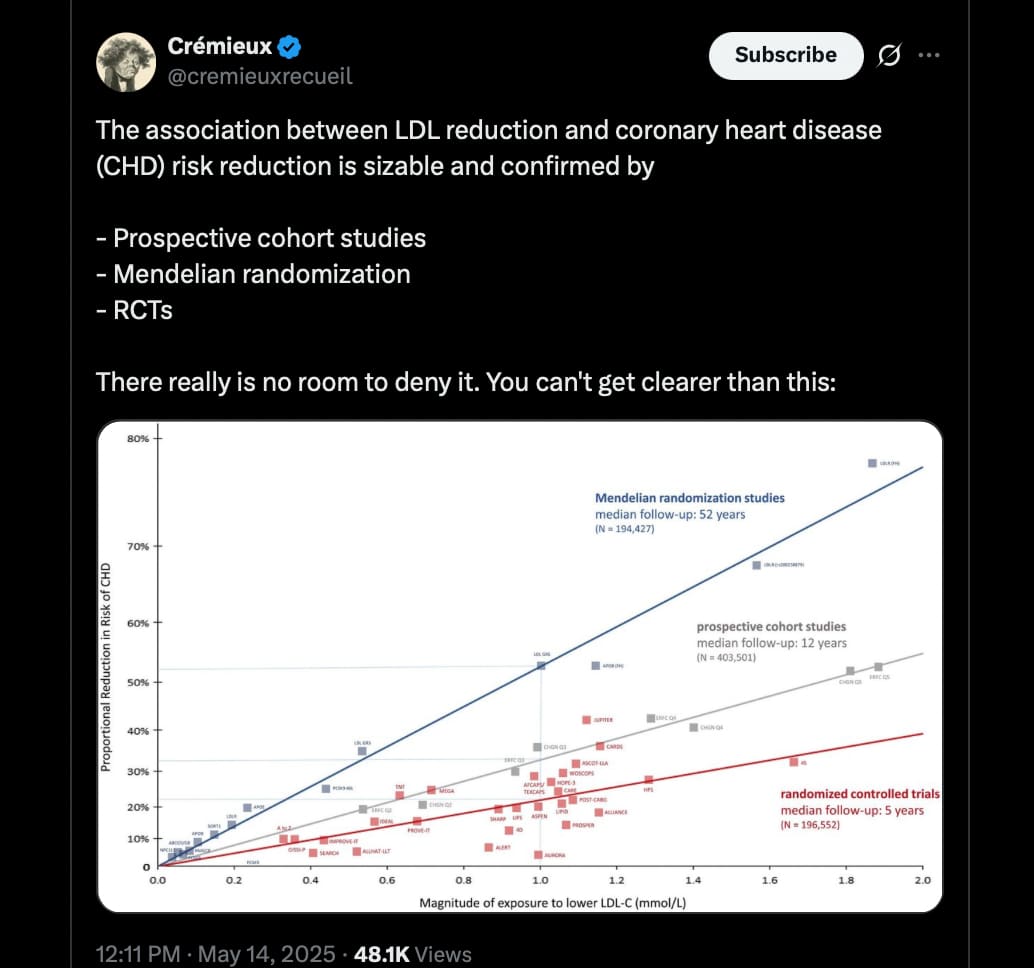This dovetails very nicely with the studies showing Lp(a) as a risk factor in the context of hsCRP and IL-6. There were a number of studies showing that elevated Lp(a) was highly MACE causative when hsCRP is elevated (above 2mg/L) - an example is a paper @BarryAllen posted in the thread “CVD and high Lp(a) levels”:
High-sensitivity C-Reactive Protein Modifies the Cardiovascular Risk of Lipoprotein (a): Multi-Ethnic Study of Atherosclerosis
“Lp(a)-associated ASCVD risk is observed only with concomitant elevation of hsCRP. Individuals with concomitant presence of elevated Lp(a) and systemic inflammation have greater ASCVD risk and all-cause mortality, thus may merit closer surveillance and more aggressive ASCVD risk management.”
However, things are not so simple as I noted in that thread. First, I cited a paper that found that:
“In both primary and secondary prevention populations, higher Lp(a) was associated with increased cardiovascular risk independent and regardless of hs-CRP”
https://jamanetwork.com/journals/jamacardiology/fullarticle/2814836
But also, and this is where IL-6 is tied in:
Inflammation, Lp(a) and cardiovascular mortality: results from the LURIC study
“Participants were predominantly male, with a mean age of 62.6 years. Extremely high Lp(a) (> 100 mg/dL) was associated with increased cardiovascular mortality (HR 1.5, 95% CI 1.06-2.12) compared to Lp(a) < 50 mg/dl. Both hsCRP (> 2 mg/L, HR 1.39, 95% CI 1.08-1.79 third vs. first interval) and more so IL-6 (HR 1.92, 95% CI 1.64-2.23, upper vs. lower half), were independently associated with higher CVD mortality. While hsCRP did not increase the Lp(a)-CVD mortality in stratified analysis, high IL-6 conferred an increased risk at Lp(a) levels > 100 mg/dL (HR 1.25, 95% CI 1.09-1.44).”
Bottom line, IL-6 is certainly a key inflammatory marker which appears causative in CVD. The poster @BarryAllen also provided a link on how to control IL-6 in that thread.





